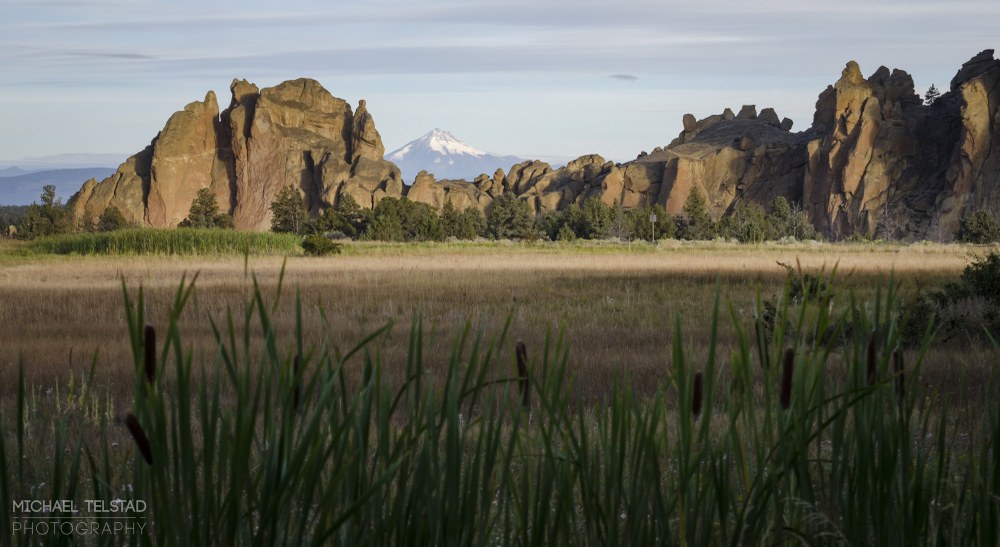
With the days getting shorter and colder as we creep into winter, many climbers start looking for warmer venues for their climbing excursions. If you are looking for a weekend warm-up, we have good crags close to home, like Vantage, Tieton, and Smith Rock. However, even though these areas are usually warm during the day, they can still get bitterly cold at night. Climbers should be prepared for the temperature swings that accompany these arid, deserty crags.
Two climbers were in Smith Rock near this time of year climbing a 5-pitch 5.7 called "Birds in a Rut" in the Marsupial Crags area. The team was on the 4th pitch of the climb and the leader was just leaving the belay. He climbed up a bit, placed a cam, then climbed up a little more and placed a stopper. He was wearing gloves because his hands had been cold, but he then decided to downclimb back to the belay to take them off. As he climbed back up, he decided to clean the cam and take it with him. He climbed past his nut, and as the rope shifted and the direction of pull on the nut changed, it popped loose and came out. As he noticed this, he slipped and fell. Since no protection was in place, he had a full 25' Factor 2 fall onto his belayer.
At first he didn't realize how seriously he was injured, so he was lowered to a large ledge below. But it was soon clear to them they could not self-rescue (he had unknowingly broken his pelvis). To make matters worse, they had left both of their cell phones, their extra layers, and all their other gear in their day packs at the base of the climb 200' below them. Luckily they were able to signal two fully equipped climbers who were walking along the Burma Road, 1000' down the hillside below the base of the climb. The two climbers, who happened to be a Paramedic and a Wilderness First Responder, called 911 from one of their cell phones then proceeded to climb up to the fallen climbers to bring them gear, clothing and shelter. The first rescue team arrived within minutes, but it took 19 Responders, included a 6-person high-angle rescue team, 6 hours to first lower him to the base of the cliff and then carry him down the 1000' 45-degree hillside to the ambulance on the road below.
Lessons Learned:
Things went wrong in two main areas: The protection the climber used, and the preparedness of the climbers. Let's look at the protection aspect first.
As the climber led off, he placed a cam as his first piece of protection. This is typically a great choice because cams can be used multi-directionally. If the pull of the rope shifts the placement of the cam slightly, it is more likely to still have proper contact with the rock since it is active protection, and therefore more likely to catch a fall. If the rope is pulling up on a stopper, it is more likely to come out since they are usually set with the direction of fall (down) in mind. There have been instances where a series of stoppers have popped loose one after another as the direction of pull on the rope changed after each one came out. This is known as the "zipper effect." If a cam cannot be used as your first piece of protection after leaving the belay, then linked oppositional passive protection can be used.
The second lesson here is in regards to preparedness. The climbers in this incident left just about everything at the base of their multi-pitch climb. They had no extra layers, no food or water, and no cell phone or any other kind of communication device. They were amazingly lucky that there were two other climbers close by with both the equipment and the ability to reach them. If the fallen climbers weren't able to get someone to help them, they most likely would have become hypothermic from the drastic drop in temperatures once the sun went down, and who knows how long it would have been before someone realized they were up there.
Climbers have to be prepared for a wider range of weather conditions at this time of year. It can be warm and sunny one hour, then windy, rainy, or even snowy the next. Even with up-to-date forecasts at your disposal, changes in the weather in your immediate location can happen unexpectedly and rapidly. So if there is an incident, you need to be prepared to either wait out the conditions, self evacuate, or call for help. The climbers in this instance didn't have any of those things. The only thing they had going for them was that they were in a popular area and were able to attract the attention of other climbers. Without that, this incident could have had a very different outcome.
 James Pierson
James Pierson